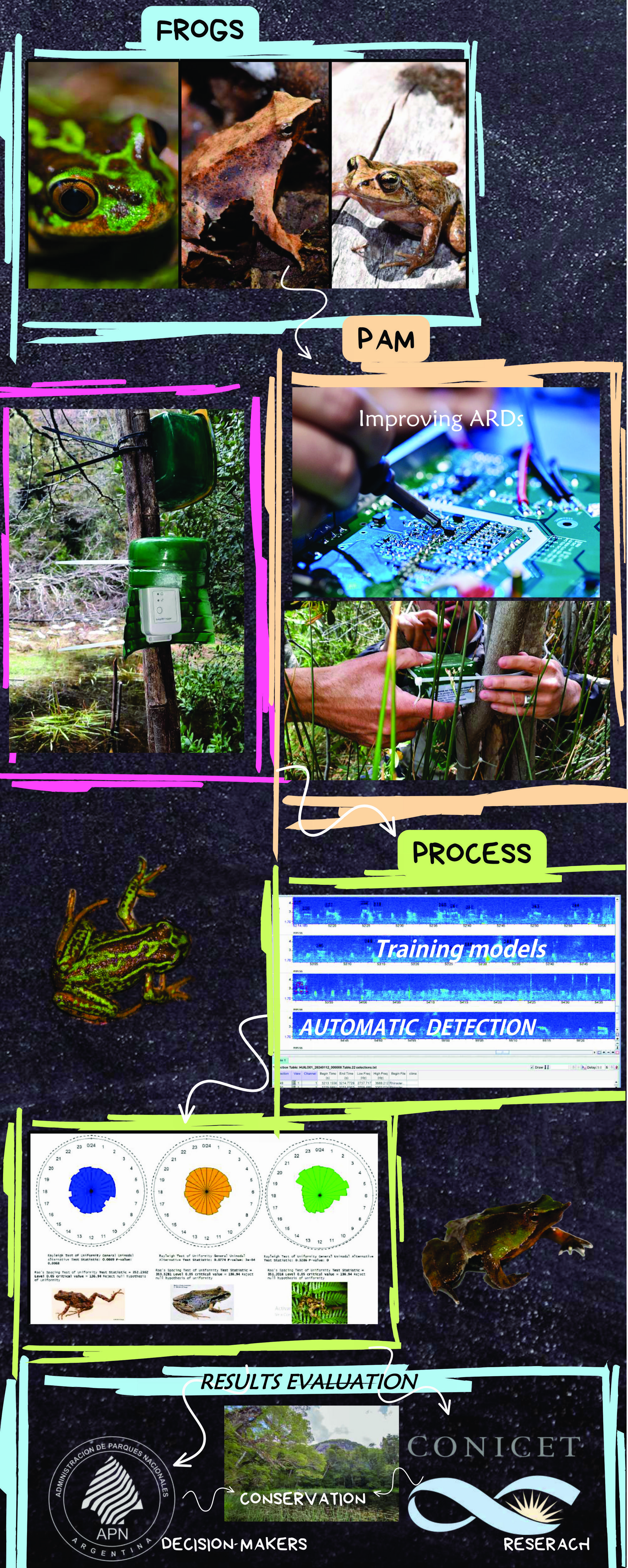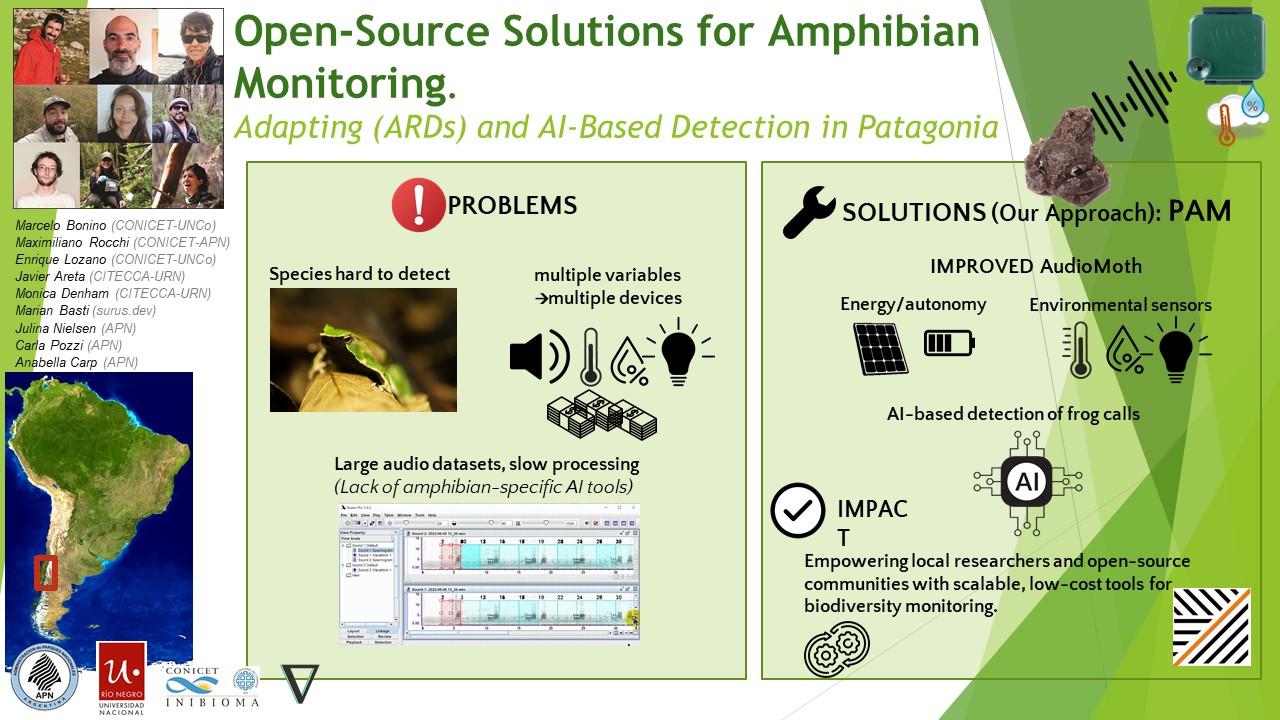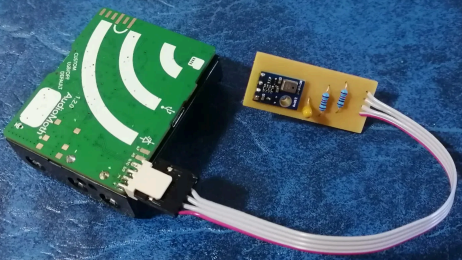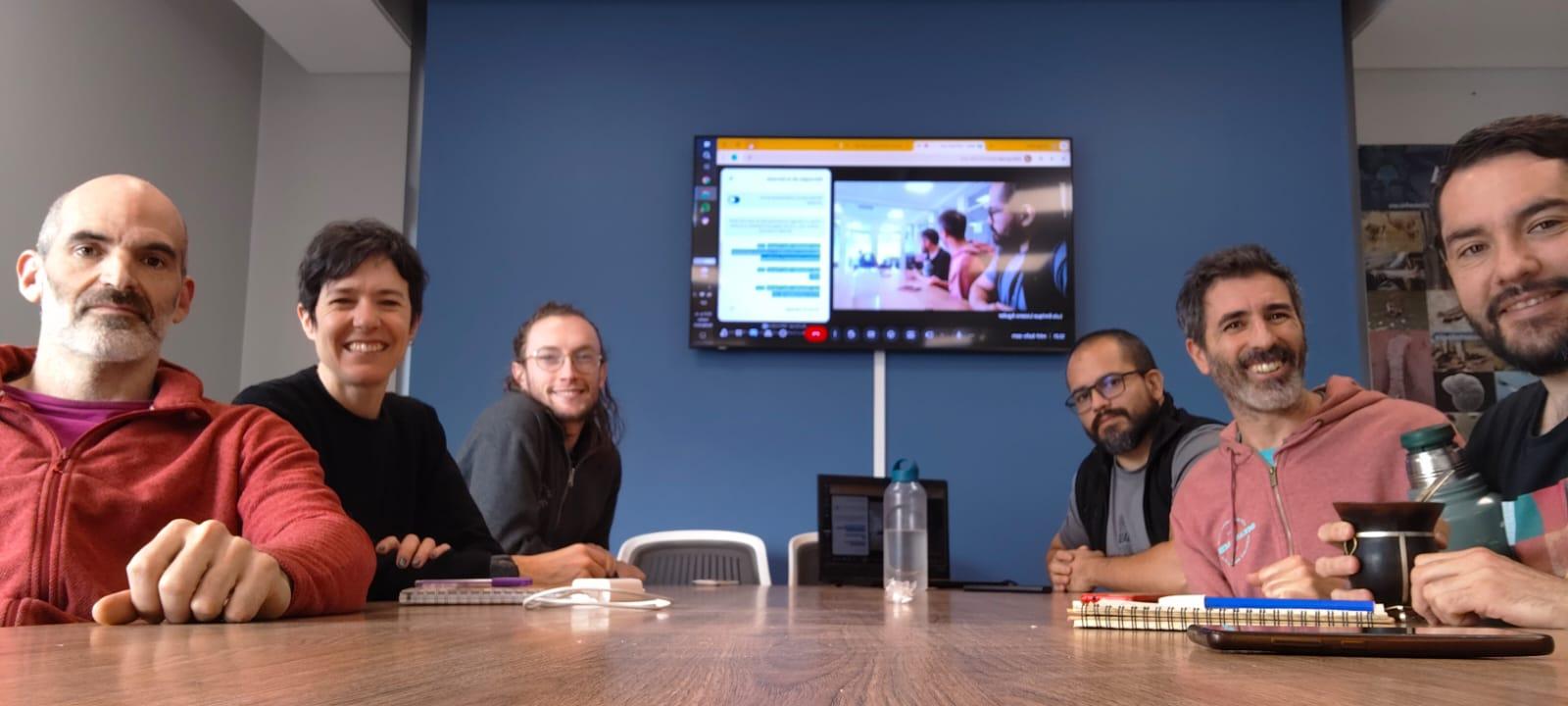 We’re excited to launch our WILDLABS-funded project to adapt open-source recording hardware and AI tools to help monitor amphibians, with an initial focus on one of South America's most iconic and endangered frogs: Rhinoderma darwinii.
We’re excited to launch our WILDLABS-funded project to adapt open-source recording hardware and AI tools to help monitor amphibians, with an initial focus on one of South America's most iconic and endangered frogs: Rhinoderma darwinii.
Our team includes researchers and students from INIBIOMA-UNCo (@boninom, @Enrique_Lozano, @VMRocchi), CITTECA-UNRN (@javierareta, @mdenham, @marianbasti), and staff from the Administración de Parques Nacionales (@cpozzi, @VMRocchi, @Anabellacarp).
In the remote Valdivian rainforest of Patagonia, R. darwinii has become increasingly rare, with many historical populations disappearing from the Argentine side of the Andes. Confirming its continued presence in these areas is critical — but traditional field surveys are time-consuming, invasive, and often inconclusive.
With support from the WILDLABS Awards, our team will:
🛠️ Redesign and enhance open-source AudioMoth devices to include sensors for humidity, temperature, pressure, and light, turning them into multi-sensor loggers capable of collecting environmental and acoustic data simultaneously.
🔋 Integrate rechargeable batteries and solar panels for sustainable long-term deployment in remote areas.
🧠 Apply deep learning algorithms tailored to amphibian calls to automate the detection of R. darwinii and other species with greater accuracy.
🌎 Generate a publicly available dataset of annotated amphibian calls to support future research in the region and beyond.
This effort aims to empower local researchers with tools that are low-cost, scalable, and adaptable to diverse ecosystems.
We’re looking forward to building and sharing these tools with the broader conservation tech community.
7 August 2025 9:27pm
Project Update — Sensors, Sounds, and DIY Solutions (sensores, sonidos y soluciones caseras)

We continue making progress on our bioacoustics project focused on the conservation of Patagonian amphibians, thanks to the support of WILDLABS. Here are some of the areas we’ve been working on in recent months:
(Seguimos avanzando en nuestro proyecto de bioacústica aplicada a la conservación de anfibios patagónicos, gracias al apoyo de WildLabs.Queremos compartir algunos de los frentes en los que estuvimos trabajando estos meses)
1. Hardware
One of our main goals was to explore how to improve AudioMoth recorders to capture not only sound but also key environmental variables for amphibian monitoring. We tested an implementation of the I2C protocol using bit banging via the GPIO pins, allowing us to connect external sensors. The modified firmware is already available in our repository:
👉 https://gitlab.com/emiliobascary/audiomoth
We are still working on managing power consumption and integrating specific sensors, but the initial tests have been promising.
(Uno de nuestros principales objetivos fue explorar cómo mejorar las grabadoras AudioMoth para que registren no sólo sonido, sino también variables ambientales clave para el monitoreo de anfibios. Probamos una implementación del protocolo I2C mediante bit banging en los pines GPIO, lo que permite conectar sensores externos. La modificación del firmware ya está disponible en nuestro repositorio:
https://gitlab.com/emiliobascary/audiomoth
Aún estamos trabajando en la gestión del consumo energético y en incorporar sensores específicos, pero los primeros ensayos son alentadores.)
2. Software (AI)
We explored different strategies for automatically detecting vocalizations in complex acoustic landscapes.
BirdNET is by far the most widely used, but we noted that it’s implemented in TensorFlow — a library that is becoming somewhat outdated.
This gave us the opportunity to reimplement it in PyTorch (currently the most widely used and actively maintained deep learning library) and begin pretraining a new model using AnuraSet and our own data. Given the rapid evolution of neural network architectures, we also took the chance to experiment with Transformers — specifically, Whisper and DeltaNet.
Our code and progress will be shared soon on GitHub.
(Exploramos diferentes estrategias para la detección automática de vocalizaciones en paisajes acústicos complejos. La más utilizada por lejos es BirdNet, aunque notamos que está implementado en TensorFlow, una libreria de que está quedando al margen. Aprovechamos la oportunidad para reimplementarla en PyTorch (la librería de deep learning con mayor mantenimiento y más popular hoy en día) y realizar un nuevo pre-entrenamiento basado en AnuraSet y nuestros propios datos. Dado la rápida evolución de las arquitecturas de redes neuronales disponibles, tomamos la oportunidad para implementar y experimentar con Transformers. Más específicamente Whisper y DeltaNet. Nuestro código y avances irán siendo compartidos en GitHub.)
3. Miscellaneous
Alongside hardware and software, we’ve been refining our workflow.
We found interesting points of alignment with the “Safe and Sound: a standard for bioacoustic data” initiative (still in progress), which offers clear guidelines for folder structure and data handling in bioacoustics. This is helping us design protocols that ensure organization, traceability, and future reuse of our data.
We also discussed annotation criteria with @jsulloa to ensure consistent and replicable labeling that supports the training of automatic models.
We're excited to continue sharing experiences with the Latin America Community— we know we share many of the same challenges, but also great potential to apply these technologies to conservation in our region.
(Además del trabajo en hardware y software, estamos afinando nuestro flujo de trabajo. Encontramos puntos de articulación muy interesantes con la iniciativa “Safe and Sound: a standard for bioacoustic data” (todavía en progreso), que ofrece lineamientos claros sobre la estructura de carpetas y el manejo de datos bioacústicos. Esto nos está ayudando a diseñar protocolos que garanticen orden, trazabilidad y reutilización futura de la información. También discutimos criterios de etiquetado con @jsulloa, para lograr anotaciones consistentes y replicables que faciliten el entrenamiento de modelos automáticos. Estamos entusiasmados por seguir compartiendo experiencias con Latin America Community , con quienes sabemos que compartimos muchos desafíos, pero también un enorme potencial para aplicar estas tecnologías a la conservación en nuestra región.)






Marcelo Bonino
National Scientific and Technical Research Council of Argentina (CONICET)